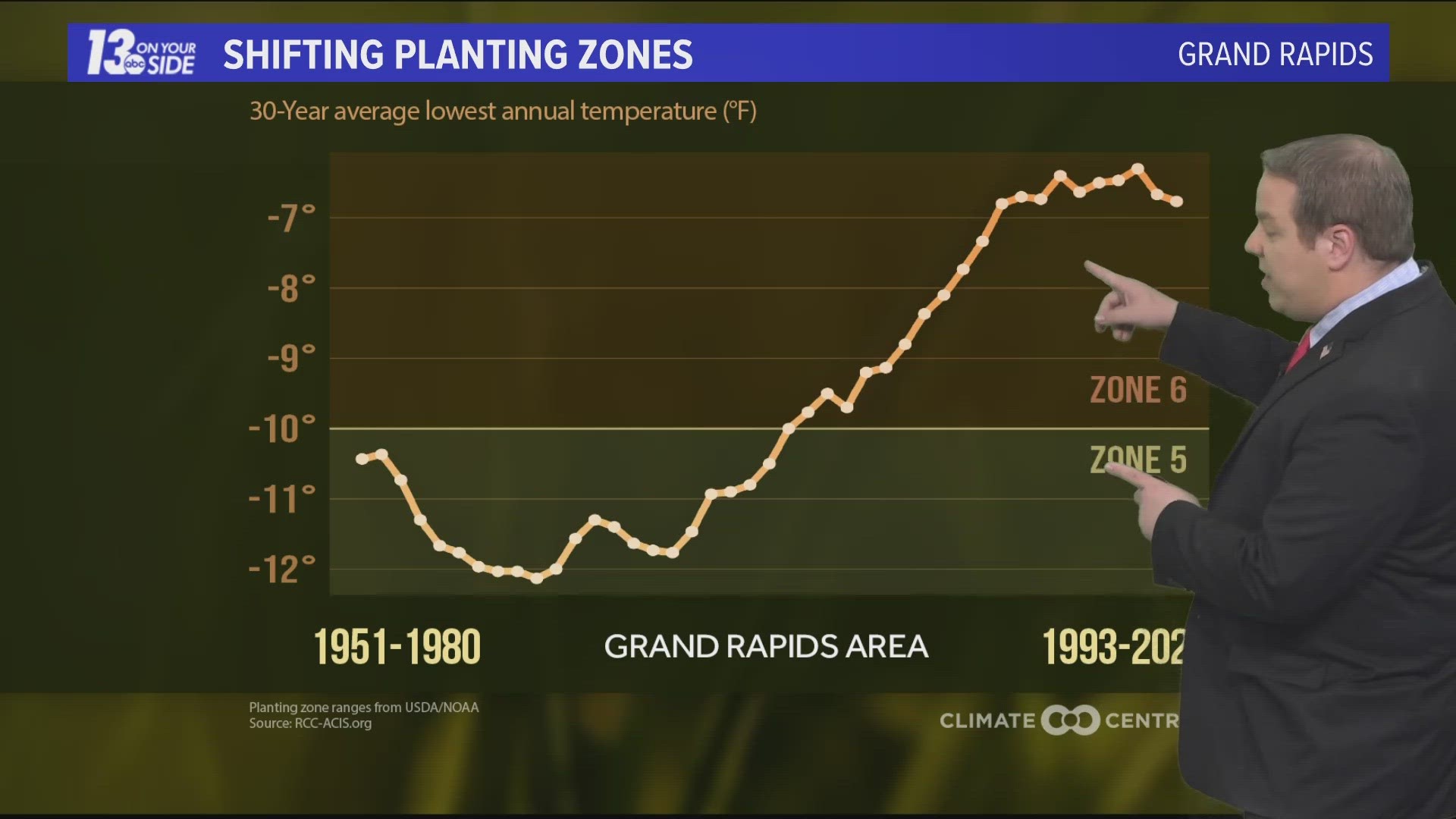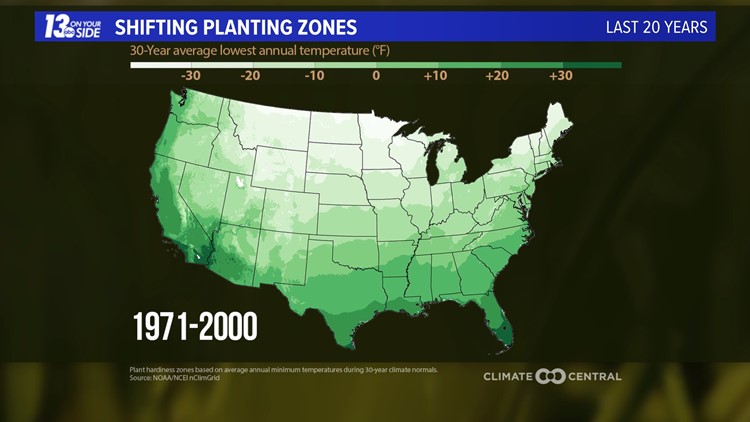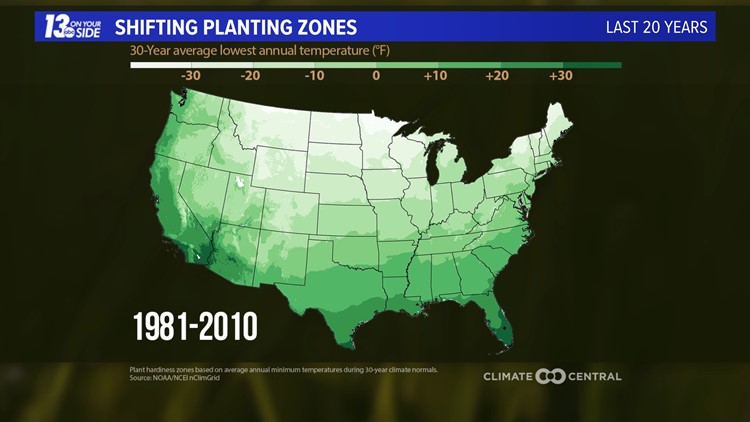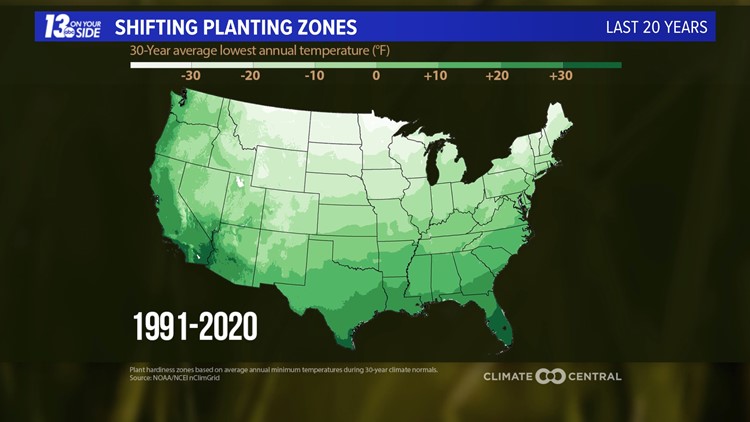GRAND RAPIDS, Mich. — When it comes to planting crops, or your backyard garden, there's hardly a more impactful factor than the weather.
As weather patterns have shifted over time thanks to climate change, planting conditions across the country have also shifted. What this means is that advice passed down by your parents or grandparents on planting may now be out of date.
Average climate conditions are used to create so-called "plant hardiness zones" across the United States, and these are then used to recommend what people can plant, harvest, or grow in the region where they live. The map considers annual minimum temperatures averaged over a 30-year period, with each zone having a 10 degree range.


What we have seen over time is that these zones have been shifting more northward as climate change brings in warming temperatures. That means regions that were previously too cold for certain species now may be open to a wider variety of planting options.
While this may sound like nothing but good news, it's not all so rosy. With the additional planting opportunities, you will also see a rise in insect populations, invasive plants, and invasive insects and animals. This may cause great harm to local plant life and crops that the region had previously been able to support.
Shifting Planting Zones
If your planting knowledge has stayed up to date over the years, nothing has changed in Grand Rapids since the early 2000s. That is when we changed from zone 5 to zone 6. Since then we have stabilized in zone 6.

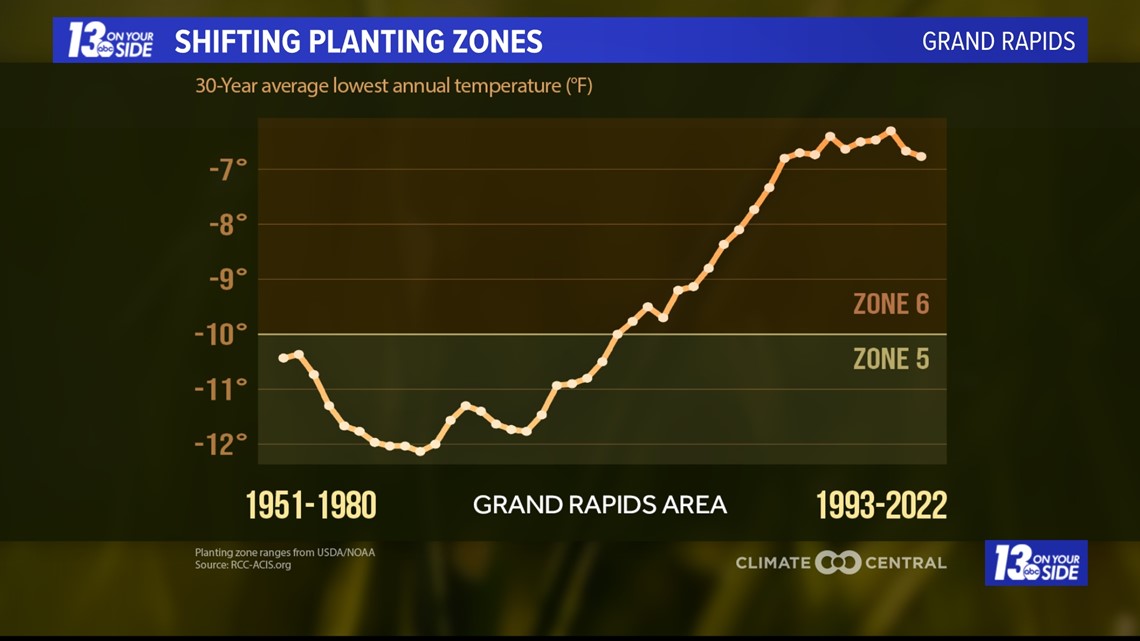
Stability is not the case for all regions. Just down the road in Flint, Michigan they also shifted into zone 6 back in the 2000s. However, in just about 10 years, they have fallen back into zone 5 and are currently on a declining path.
Frequent changes in annual lowest temperature can make selecting the right crops for the fields or your garden into something of a guessing game.

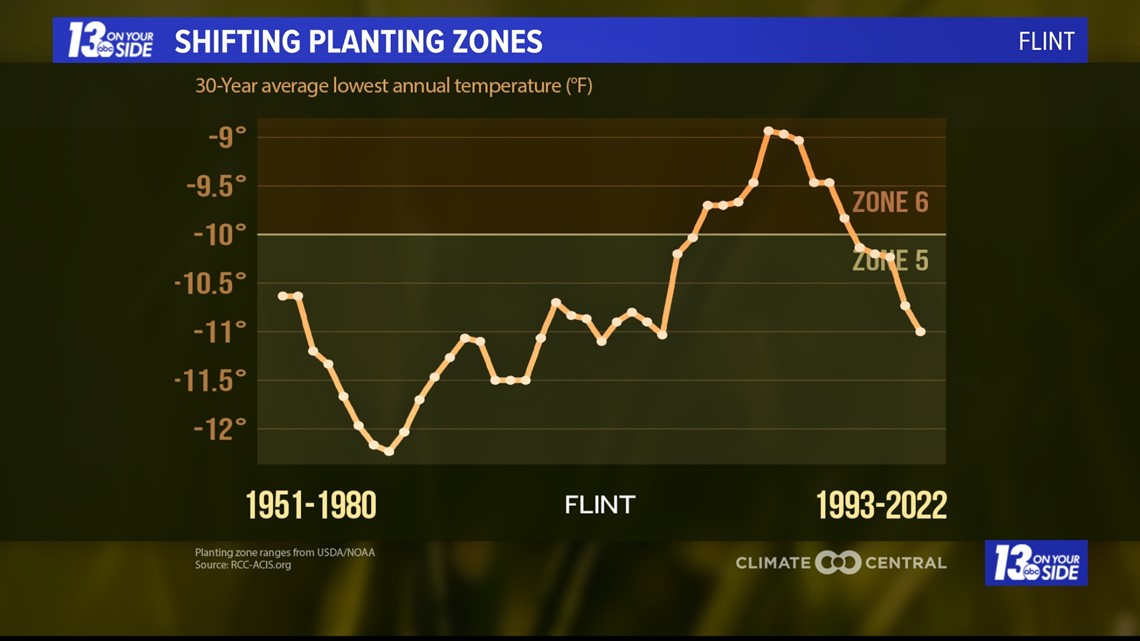
If climate trends continue as they have in the last 50 years, we are likely awaiting more ups and downs as planting regions continue to shift. That means the planting advice that we can give out today, may no longer be the same tomorrow.
-- Meteorologist Michael Behrens
Follow me on social media! Facebook Meteorologist Michael Behrens, Twitter @MikeBehrensWX, and Instagram @MikeBehrensWX.
Email me at: MBehrens@13OnYourSide.com
Have a 30-second video or still photo to share? We'd love to share it with everyone! Email your image to Weather@13OnYourSide.com or post it to our 13OnYourSide Facebook Page.
►Make it easy to keep up to date with more stories like this. Download the 13 ON YOUR SIDE app now.
Have a news tip? Email news@13onyourside.com, visit our Facebook page or Twitter. Subscribe to our YouTube channel.

